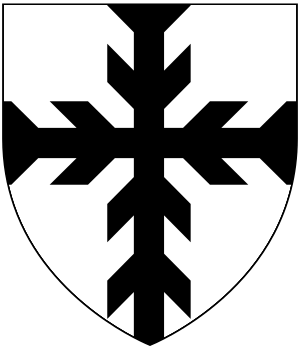William Sandys, 1st Baron Sandys facts for kids
William Sandys, 1st Baron Sandys (born 1470 – died 4 December 1540) was an important English diplomat. He lived at a place called The Vyne in Hampshire. William Sandys was a favorite of King Henry VIII and served as his Lord Chamberlain. This was a very important job in the King's household.
In the 1520s, he built a grand house at The Vyne. It was a large, fancy home in the Tudor style. Today, parts of this house still stand and are looked after by the National Trust.
Who Was William Sandys?
William Sandys was the younger son of Sir William Sandys (1440–1496). His mother was Margaret Cheyne. She was Sir William's second wife. William also had a sister named Edith Sandys.
His Career and Life
When William Sandys was young, he quickly became important at the King's court. He was close to the future King Henry VIII. He even helped when Henry was made a knight. He also helped welcome Henry's first wife, Catherine of Aragon.
William became a close friend and helper to King Henry VIII. In 1517, he was made the Treasurer of Calais. Calais was a town in France that belonged to England at that time. In 1518, he received a special honor: he became a Knight of the Garter. This was a very high award given by the King.
William Sandys helped arrange a famous meeting in 1520. This meeting was between the English King Henry VIII and the French King Francis I. It was called the Field of the Cloth of Gold. It happened near Calais.
In 1523, King Henry VIII gave William Sandys the title of Baron Sandys of The Vyne. This made him a noble. In 1530, he became the King's Lord Chamberlain. This meant he was in charge of the King's household. Later that same year, he was made Captain of Guisnes. Guisnes (today spelled Guînes) was an important English fort near Calais. He held this job until he died in 1540.
Being Captain of Guisnes was a very important job. Guisnes was a key English outpost. William Sandys often had to travel there for his duties. He spent a lot of time outside England, especially between 1526 and 1529, and again from 1538 to 1540.
While in Guisnes, he likely caught an illness called "sweating sickness." This illness made him very sick later in life. It sometimes kept him from being at court. In 1529, he was so ill he could not walk. In 1533, the sickness returned. By 1534, he was very close to dying. This illness was probably malaria. Malaria was common in marshy areas like Guisnes at that time.
King Henry VIII visited William Sandys at The Vyne three times. One of these visits was with his queen, Anne Boleyn. Later, Sandys had the sad duty of escorting Anne Boleyn to her imprisonment in the Tower of London. It is believed that William Sandys did not approve of Henry's marriage to Anne. Because of this, he spent less time at court.
William Sandys did not take part in any rebellions against the King. In 1536, he was asked to bring 400 men to help the King. He was also asked to prepare food and lodging for the King and his group. This was a task he was good at as Lord Chamberlain.
In his later years, Sandys was very busy with his duties at Guisnes. He worked on making the castle and town stronger. Even with his efforts, the castle was often reported as being hard to defend.
William Sandys returned to The Vyne from Calais in October 1540. He died at The Vyne on December 4, 1540. King Henry VIII was told that "the Lord Chamberlain, who was captain of Guisnes is dead." The French ambassador in London also reported his death. He said Sandys was "much esteemed here and was one of the few ancient captains left."
William Sandys was buried in the Chapel of the Guild of the Holy Ghost in Basingstoke. He had founded this chapel himself. Parts of his tomb can still be seen in the chapel's ruins today.
William Sandys and Anne Boleyn
Henry VIII became interested in Anne Boleyn around 1526. This was the same year Sandys became Lord Chamberlain and Captain of Guisnes. By 1529, Anne Boleyn was often with Henry, almost like she was already queen.
During these years, Sandys spent about 18 months in Guisnes. But when he was in England, his job as Lord Chamberlain meant he often had to arrange things for Anne Boleyn. He would have known her well.
In 1532, he was at the ceremony where Anne Boleyn was given the title of Marquess of Pembroke. In 1533, he was one of the lords who went with her to her coronation. In October 1535, he hosted both Anne and Henry when they visited The Vyne. By then, Anne was Queen.
Family Life
William Sandys married Margaret Bray. She was the daughter of his cousin, John Bray. William and Margaret had at least three sons and four daughters.
Their children included:
- Thomas Sandys, 2nd Baron Sandys: He was their oldest son and took over his father's title.
- Mary Sandys: She married Sir William Pelham.
- Alice Sandys: She married Walter Hungerford, 1st Baron Hungerford of Heytesbury.




